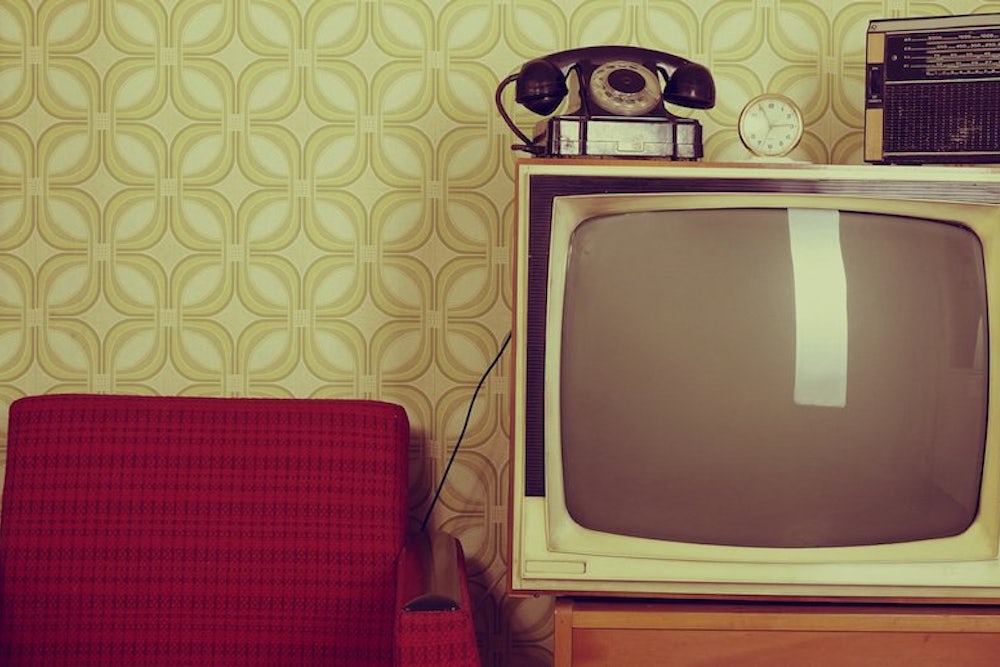Since the popularization of television in the 1950s, the TV lawyer has been a ubiquitous presence on the small screen. This week's New Republic interview with "Breaking Bad"'s Bob Odenkirk—who plays a slimy lawyer if there ever was one—inspired us to take a look at the evolution of the TV lawyer. From the classic characters to the revolutionary, here are a few of our favorites:
Bart Matthews, “The Public Defender” 1954-55
Though perhaps not the first lawyer on television, Bart Matthews’s role on “The Public Defender” defined the spirit of the age. A champion of the poor and disenfranchised, Matthews successfully defended his clients in heroic fashion. In Matthews’s world, the good guys nearly always reigned supreme.
Perry Mason, “Perry Mason” 1957-66
The title character in a series of novels, then radio programs, and finally TV and film projects, defender Perry Mason described himself as a “specialist on getting people out of trouble.” One of the most successful TV shows of its era, “Perry Mason” continued the feel-good ethos of Bart Matthews, with Mason serving as a brilliant, successful crusader, with a penchant for complex, nearly impossible-to-solve cases.
Kenneth and Lawrence Preston, “The Defenders” 1961-65
The Museum of Broadcast Communications called “The Defenders,” which featured a father-son adjudicating team, “singularly resonant of New Frontier liberalism.” The lawyers, Kenneth and Lawrence Preston, operated in the same vein as Matthews and Mason, but introduced hot-button issues such as capital punishment, immigration, and abortion.
Kate McShane, “Kate McShane” 1975
The first network TV show to feature a top-billed female attorney, “Kate McShane” was not exactly progressive when it came to its depiction of a professional woman: McShane’s hallmark characteristic was her emotional involvement with clients and their cases. “Kate McShane” lasted seven episodes.
Dan Fielding, “Night Court” 1984-92
“Night Court”’s Dan Fielding, played by John Larroquette, epitomized the stereotypically narcissistic lawyer. Time initially called the show “the most realistic law show on the air” for its portrayal of the justice system’s less glamorous side.
Victor Sifuentes, “L.A. Law” 1986-94
The first Hispanic attorney on television, Jimmy Smits as Victor Sifuentes on “L.A. Law” was nominated for an Emmy six times for the role. The ratings-hit eventually became so popular that The New York Times claimed it could be “credited with—or blamed for—increasing applications to law school, for dominating classroom discussions there and for disillusioning graduates once they discover how different the real world can be.”
Jackie Chiles, “Seinfeld” 1989-98
Showcasing the lighter side of litigiousness, “Seinfeld”’s Jackie Chiles epitomized the classic ambulance-chaser. Though he appeared in only six episodes, Chiles—a likely parody of Johnnie Cochran—is well-remembered for his bombastic outbursts.
Jack McCoy, “Law & Order” 1990-2010
Perhaps the most respected character on television, Sam Waterston’s Assistant District Attorney Jack McCoy defined the ethos of “Law & Order” for 16 years. Passionate but measured, McCoy’s integrity and perseverance often led him to bend the rules in the name of justice—a hallmark of a franchise that often played with the anxieties of Rudy Giuliani’s New York City.
Ben Matlock, “Matlock” 1992-95
Essentially an older version of Perry Mason, Ben Matlock’s down-home foibles offered a slow-paced alternative to Jack McCoy’s big city problems. Andy Griffith’s Matlock could be cranky and pedantic, but his zealous courtroom confrontations had singular appeal.
Bobby Donnell, “The Practice” 1997-2004
“The Practices”’s Bobby Donnell (played by the dashing Dylan McDermott) introduced a sense of moral ambiguity to the figure of the criminal-defense attorney, essentially attempting to turn him into a lawyer-hero.
Ally McBeal, “Ally McBeal” 1997-2002
Though fairly wacky and esoteric (remember that dancing baby?), “Ally McBeal” presented the struggles of Generation X's working women writ large: work-life balance, gender issues in the workplace, and, of course, co-ed bathrooms. As we once wrote in our pages, Ally McBeal’s title character was “living proof … that the persona and the professional are not necessarily divided by a Berlin Wall.”
Bob Loblaw, Maggie Lizer, and Barry Zuckerkorn, “Arrested Development” 2003-06, 2013
“Arrested Development” featured a whole crew of attorneys: highly unqualified Barry Zuckerkorn (played with astonishing naïveté by Henry Winkler), dry-as-dust Bob Loblaw (Scott Baio), and the ever-lying Maggie Lizer (Julia Louis-Dreyfus). This cast constituted three of television’s most pigeonholed character actors, demonstrating just how fully they could shed their former roles.
Patty Hewes, “Damages” 2007-Present
With two powerful, brilliant women at its center, “Damages” entirely reshaped women’s roles in the genre. With Glenn Close as Patty Hewes, the show proved that television’s female attorneys could be as cold-blooded as their male counterparts.
Alicia Florrick, “The Good Wife” 2009-Present
When it aired in 2009, “The Good Wife” captured a particular slice of the zeitgeist. Eliot Spitzer had just resigned from office after his involvement with a prostitute; the show depicted a politician’s wife—lawyer Alicia Florrick, played by Julianna Margulies—whose husband had just been forced to do the same. TV shows have long borrowed from the headlines, but this was a particularly direct application of the news.
Lede image via Shutterstock.
